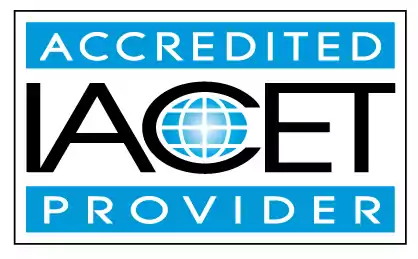Demonstrate understanding of using assessment and observations for short and long term goal development for ages four and above.
Demonstrate understanding of using assessment and observations for short and long term goal development for ages four and above. Explore how assessment and observations can also be used for short and long term goal development for ages birth to three. Enhance your knowledge in early childhood education and child care centers.Trainings incorporating this outcome
CDA Subject Areas
Proficiency Level
Topic Areas
120 hours courses
45 hours courses
3 hours courses
Related Outcomes
- Demonstrate understanding of using assessment and observations for short and long term goal development for ages birth to three.
- Demonstrate understanding of using assessment and observation for short and long term goal development for special needs
- Demonstrate an understanding of translating assessment and observational information into short and long term goal development
- Demonstrate an understanding of how chronic illness can affect development in ages four and above.
- Demonstrate an understanding of how to develop assessments using Blooms Taxonomy.
- Demonstrate an understanding of brain development in children birth through age three
- Demonstrate an understanding of prenatal development and its impact on child development.
- Demonstrate an understanding of observational techniques that result in accurate and objective observation
- Demonstrate an understanding of how to develop and implement a daily schedule for school-age children.
- Demonstrate an understanding of development in children 2-5 years of age
- Demonstrate an understanding of the physical, emotional, and motor development in children five to twelve years of age
- Demonstrate an understanding of development in children 3-5 years of age and their learning styles.
- Demonstrate an understanding of physical growth and development in school age children and the impact it has on programming
- Demonstrate an understanding of typical and atypical development from birth to age 2..
- Demonstrate an understanding on how chronic illness can affect development in ages birth to three.
- Demonstrate an understanding of how to use transitions for various age groups and for different parts of the school day.
- Demonstrate an understanding of typical and atypical development from age 2 to 5.
Related Articles
- Empowering Education Through Understanding Child Development Theories
- How to Manage a Classroom with Multiple Age Groups
- Building Brighter Futures: The Critical Role of Professional Development for Early Childhood Educators
- The Impact of Montessori Education on Early Childhood Development
- Small Resolutions for Small People: Teaching Goal-Setting to Preschoolers
- Dashing Through Development: Holiday Games to Encourage Gross Motor Skills
- Don't Miss Out on $210 in Savings: Expiring Coupons You Need to Use!
- National Hug a Bear Day: Use Stuffed Animals to Teach Empathy and Care
- Recent Developments in Early Childhood Education
- Oklahoma providers: CDA assessment Scholarship
- How Early Childhood Education Serves as a Pivotal Stage in a Child's Development
- Why Professional Development Training is Worth the Investment for Early Childhood Educators
- Understanding the Importance of Child Abuse and Neglect Training
- The Unofficial Guide to Acing the Child Development Associate Training: Humor & Hacks
- Montessori Mistletoe: How to Create a Holiday-Themed Classroom Using Montessori Principles
- Snow Much Fun: Winter Sensory Activities to Enhance Child Development
- The Secret Life of Crayons: What Children’s Coloring Choices Reveal About Their Developing Personality
- Playdough Dreams: Play Goals for Tiny Humans in 2025
- Big Snowflakes, Bigger Milestones: Supporting Child Development Through Seasonal Activities
- 45 hour Growth and Development
 12 CEUs
12 CEUs